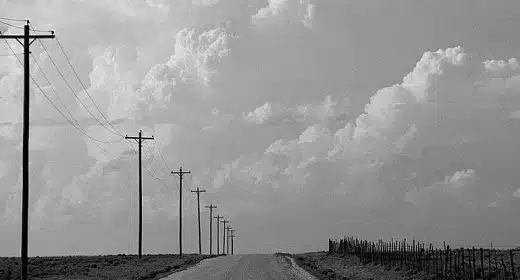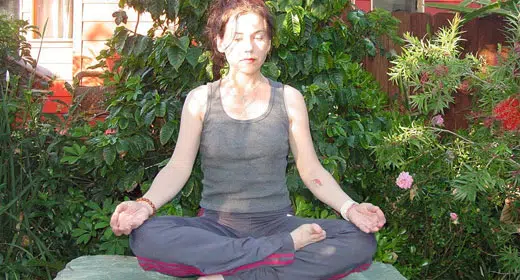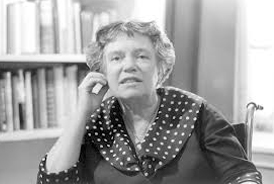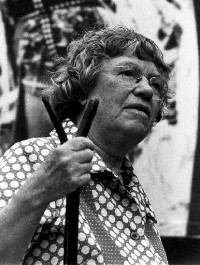What is the source of the “Never doubt…” quote?
Although the Institute has received many inquiries about this famous admonition by Margaret Mead, we have been unable to locate when and where it was first cited, becoming a motto for many organizations and movements. We believe it probably came into circulation through a newspaper report of something said spontaneously and informally. We know, however, that it was firmly rooted in her professional work and that it reflected a conviction that she expressed often, in different contexts and phrasings.
Mead’s fullest exploration of cultural transmission and of the place of small groups in cultural change and innovation was in Continuities in Cultural Evolution, first published in 1964. Appropriately, the reissue of this book was one of the first goals of the Mead2001 celebration, and it has now been brought out by Transaction Publishers with a new introduction by Stephen Toulmin setting it in the context of contemporary evolutionary thinking.
The “Never doubt” challenge is sometimes quoted in a longer form, with the coda, “indeed, it’s the only thing that ever has.” We decided on the shortened form both for brevity and because the exaggeration in the coda may, in print, weaken the basic concept rather than reinforce it.
Can my organization use the “Never doubt…” quote?
Regarding Margaret Mead‘s quote, “Never doubt that a small group of thoughtful, committed citizens can change the world. (r) Indeed, it is the only thing that ever has.” If you wish to use the quote for non-commercial and non-partisan purposes, including the trademark sign where noted above, please do so with no charge and our good wishes. Following the quotation and the name Margaret Mead, you may put “Used with permission.”
This quote is now trademarked, and the trademark is held by Sevanne Kassarjian, New York. The “Never doubt” challenge is sometimes quoted in the longer form, with the coda, “Indeed, it is the only thing that ever has.” We decided on the shortened form, both for brevity and because the exaggeration in the coda may, in print, weaken the basic concept rather than reinforce it. Please note, should you decide to include the coda, that it is not included in the registered trademark of this material.
Use of the quote for commercial purposes without charge is strictly prohibited.
Use of the quote for partisan causes is strictly prohibited.
Where can I find biographies of Margaret Mead and Gregory Bateson?
Mead and husband Gregory Bateson doing field research in Papua, New Guinea, in 1938. (Mead Archives, Library of Congress.) No one existing biography is ideal, but you can find a brief summary of Mead’s life on her Biography page. An extensive look at Bateson’s life and work is on his Biography page, reprinted from Roy Rapport’s Obituary in the June 1982 edition of American Anthropologist.
Mead’s autobiography Blackberry Winter tracks her professional life only up to World War II. Jane Howard’s biography, Margaret Mead: A Life, bases the early period primarily on Mead’s autobiography and the later period on interviews, with very little documentary research, but it does give a framework for the whole and has an index. Mary Catherine Bateson’s book With A Daughter’s Eye is a memoir of both her parents. Of the available short biographies, the best is probably the article on Mead in theInternational Encyclopedia of the Social Science by Renee Fox. A number of historians are continuing research on Mead’s life and more narrowly focused books continue to appear and are listed underbooks about Mead.
The definitive biography of Gregory Bateson is Legacy of a Scientistby David Lipset, now out of print, which deals with his family background as well as his unusual career path.
How do I find copies of Mead and Bateson’s books?
Mead was a prolific writer and chronicler, as evidenced in her Bibliography, where books currently available are noted. Several of Mead’s most prominent books were reissued for the Centennial, and these are noted also. Likewise several of Bateson’s best known work have been or will be reissued for his centennial. You can find some of their work at bookstores. For works that are out of print, check at used bookstores or through online search services. Also, check with your local library or a university library near you.
Are there archives of Mead’s and Bateson’s original papers and photos?
There are multiple sources for Mead and Bateson archival materials. Mead’s personal and professional papers, along with motion picture film and sound items, are housed in the Library of Congress; she and Bateson’s field materials have been brought together there in the South Pacific Ethnographic Archives; the American Museum of Natural History has some of her administrative correspondence and interviews.
Gregory Bateson’s pre-World II papers, including the above-mentioned films, are located at the Library of Congress as well. The balance of his papers are housed at the University of California at Santa Cruz.
How do I get permission to reprint something from Mead or Bateson’s work?
As of December 2009, the rights in the unpublished papers, correspondence, and field notes of Margaret Mead and many of her colleagues, now archived in the Library of Congress, including the pre-war notes and photographs of Gregory Bateson, are now in the public domain (or, as the Library puts it, donated to the people of the United States of America).
With the dissolution of IIS at the end of 2009, the rights in publications of Margaret Mead are being donated to the American Anthropological Association which has a Publications Department managing and giving permissions for its various journals and monograph series, to manage for the benefit of the profession and to provide income for their continuing work.
For works under contract and in print, existing contractual rights continue, and journal articles are often copy righted by the publishing journals. For permissions, contact the AAA by mail at 2200 Wilson Blvd, Suite 600, Arlington VA 22201, Attention: Permissions, or by e-mail at permissions@aaanet.org. The copyrights in all publications of the Institute are also being transferred to the AAA at this time.
As of December 2009, the rights in publications of Gregory Bateson will be handled by Nora Bateson, the daughter of Gregory Bateson and Lois Camack. She is in the process of forming a non-profit corporation to be called the Bateson Ideas Group, which will take over the management of Bateson’s post World War II writings, both published and unpublished, now archived in California at UC Santa Cruz and elsewhere. The notes, films, and photographs from his pre-war ethnographic work remain in the Library of Congress. To inquire about permissions, contact Ms. Bateson at norabateson@aol.com.
What was the Institute for Intercultural Studies (IIS)?
The Institute for Intercultural Studies (IIS), founded by Margaret Mead in 1944, was a nonprofit organization concerned with “advancing knowledge of the various peoples and nations of the world, with special attention to those peoples and those aspects of life which are likely to affect intercultural and international relations.” A large part of our mission has been to strengthen public understanding of anthropological research and interdisciplinary cooperation. Beginning in 1997 through the end of 2001, the efforts of the Institute were directed toward the centennial year of Mead’s birth. In 2004 we marked Gregory Bateson’s centennial. These celebrations led to multiple conferences around the world and the reissue of some twenty books, as well as new publications and the stimulus for a new generation of researchers.
The events of the new millennium have made us even more sharply aware of the need to seek intercultural understanding, through research and by promoting Mead’s vision of enhanced communication without the loss of distinctiveness.
As of the end of 2009, the Institute has been dissolved but its legacy continues. The IIS website will continue to provide an archive of information, resources, and past activities.
Does field work continue today in the areas Mead and Bateson originally studied?
Anthropologists are building on the field work of Mead and Bateson, continuing to describe the process of social change. Some recent examples: In 1995 Peter and Ellen Demerath did extensive research in Manus, Papua New Guinea, where Mead did field work in 1929 and again in the 1950s.
Gerald Sullivan has studied and written about Mead and Bateson’s important years in Bayung Gede, Bali, where they produced a pioneering work in visual anthropology that used a combination of motion picture film, photographs and notes to document their research.
In 1991, Paul Roscoe, of the University of Maine, went up to Alitoa, the Mountain Arapesh settlement where Mead and Reo Fortune spent eight months in the early 1930s.
Research on the Chambri was resumed in 1974-75 by Deborah Gewertz, who reexamined the pattern of relationships between men and women that Mead had described. Gewertz, who has returned repeatedly to Chambri with her husband and colleague, Frederick Errington, found that Mead’s insistence on human flexibility is sustained, but, in this case, it’s an example of flexibility over a period of decades.
What was the Mead2001 Centennial?
From 1997 to 2001 the IIS worked with individuals, groups and institutions to mark Margaret Mead’s centennial. Our goal was to make the ideas associated with her and with anthropology available for the future. We invited others to look through Mead’s eyes at the value of the world’s many cultures and to share her vision of better communication with a loss of distinctiveness. The Centennial celebration was multi-faceted, and culminated with an exhibit and conference at the Library of Congress in December 2001. OurMead2001 Centennial section gives more detail on events and the commemoration.
The Mead2001 Awards, sponsored by the IIS and Whole Earth magazine, were given semiannually from 1999 through 2001 to citizen groups and organizations in any country that showed community-based creativity relevant to the new century and to Mead’s broad sense of the relevance of anthropology to social action. Nominations came from the public. Winners of the Mead2001 Award can be found in the Awards portion of the Mead2001 Centennial retrospective.
What are the plans go celebrate Gregory Bateson’s centennial?
Gregory Bateson was born in 1904, so 2004 is the centennial of his birth. A number of observances, initiated by admirers of his work, are anticipated. The Institute has been primarily concerned with encouraging the reissue of his writings and encourages other groups to take advantage of the opportunity for reevaluation in anthropological, psychological, and biological contexts. For further information on unfolding developments, send an email to the Institute, mentioning the area of Bateson’s work that interests you specifically.
How can I find out more about the Mead/Freeman controversy?
Derek Freeman, a New Zealander, was an anthropologist who attacked Mead’s work on Samoa, although he was careful not to publish until after her death. His allegations were carefully reviewed and critiqued by a number of distinguished anthropologists in a special issue of American Anthropologist in 1983 (AA 85, pp. 908-947). Martin Orans challenges Freeman’s latest allegations in a recent article in Science magazine entitled “The Smoking Gun: Smoke and Mirrors,” describing Freeman as the Kenneth Starr of anthropology. Dr. James Cote, professor of Sociology at Western Ontario University, wrote a book in 1984 summarizing the first phase of the controversy, and he has edited an issue of the Journal of Youth and Adolescence to cover the second phase.
The correspondence between Franz Boas and Margaret Mead, some two dozen letters and memos written during Mead’s first field study in Samoa in the mid-1920s, is now available online thanks to Dr. Cote. These letters, most of which were ignored by Derek Freeman in his criticisms of Mead’s methodology, refute Freeman’s claims, but more importantly provide insight into the world of anthropological study in the early part of last century.
Has anyone made a movie or film series about Mead and her unusual life?
Several documentaries, broad and narrow in their scope, have been made about her life and work. For a list of films by and about Mead on our Resources page. However, no dramatic feature film has ever appeared. Considering the scope of her adventures and relationships and the amount of first hand information available to us, we believe her life is perfect for a dramatic film. The charge to a filmmaker is to capture the scope and significance of the ideas and actions that made up her life and to show a younger generation the incredible challenges she met and surmounted.
What is the nature (and the symbol…) of the big stick that Mead used for walking?
Margaret Mead, with her thumb stick. Photo: ©1975 Smithsonian Institution. Used with permission. Mead broke her ankle in 1960 and was told to use a cane as she recovered, but she disliked the bent over posture associated with the use of a cane. A friend recommended the use of a “thumb stick” obtained in London, which is taller and allowed her to walk upright. She liked it so much that she used it for the rest of her life — indeed, she once said that all she needed to do to avoid being recognized was to leave it at home. People tended to free associate about the thumb stick: was a bishop’s staff? a device for capturing snakes? a dowsing rod? none of the above — but it became the personal symbol of an American icon, symbolizing what she symbolized to the public: human plasticity and the capacity for change.
In the end she had several thumb sticks. One is on display in the hall of South Pacific Peoples at the American Museum of Natural History in New York where she was a curator. . One is in Peri Village in New Guinea, sent as a gift after her death.
What were Mead and Bateson’s connections to the environmental movement?
Mead was very much aware of the threats to human life from abusing the environment and she was particularly active in relation to radioactive wastes and the atmosphere. When John McConnell came up with the idea of Earth Day, during the preparations for the Stockholm Conference on the Environment, Margaret Mead saw immediately that a celebration on the date of the equinox would transcend cultural and geographical barriers.. She participated actively in establishing the International Earth Day tradition at the UN. As International Chairman for the first Earth Day in 1978, Mead rang the Peace Bell UN Headquarters in New York, proclaiming: “EARTH DAY reminds the people of the world of the continuing care which is vital to Earth’s safety.” Find out more information on the origins of Earth Day and the Earth Day 2001 celebration.
Bateson tended to keep his distance from organizations and movements of any kind, but beginning in the late sixties his thinking and writing were closely connected with the philosophical issues raised by human use and abuse of the natural world.
























































